Karnataka
Ranked the 4th most popular tourist state in the country, Karnataka has a bouquet of attractions to offer you. Expanded from Belgaum in the North to Bangalore in the south, it has something to offer to everybody; from beautiful landscapes to rich cultural heritage, serene beaches and scrumptious food, Karnataka is indeed a world in itself!
It has the second highest number of protected monuments in India, Hampi being one which houses the maximum of them, was the capital of Vijayanagar Empire. The world’s largest monolith structure, the statue of Lord Gomteshwar in Shravanabelagola sees tens of thousands of pilgrims during Mahamastakabhisheka festival every 12 years.
Apart from history, Karnataka is also rich in nature’s bounty and wildlife. It has 5 National Parks and over 25 wildlife sanctuaries of which Bandipur and Nagarhole national parks are most famous. Bengaluru, the capital of the state and the “Silicon Valley of India” is known as the city of startups and IT companies and attracts thousands of tourists every year.
Coorg is one of the top destinations in Karnataka for its coffee plantations. Mysore, famous for the Mysore Palace, Hampi, famous for the ruins of Vijayanagara Empire and Chikmagalur, a hill station in the Malnad region of Karnataka are a few other popular places among the tourists.
1. Aihole is a tranquil village on the banks of Malaprabha River. Hundreds of temples pepper the villages and fields nearby. The most noteworthy among them is the Durga Temple composed of a semicircular apse, an elevated plinth and a gallery encircling the sanctum.
The Lad Khan Temple is one of the earliest temples in the region and was initially a royal assembly hall and marriage mantapa. It was the chosen abode of the Muslim chief Lad Khan.
Other major attractions in the area are the Huchimalli Temple with a sculpture of Lord Vishnu sitting atop a cobra, the Ravalphadi Cave Temple which celebrates the various incarnations of Lord Shiva, the Konti Temple Complex, the Umamaheswari Temple, the Jain Meguti Temple, and the two-storied Buddhist temple.
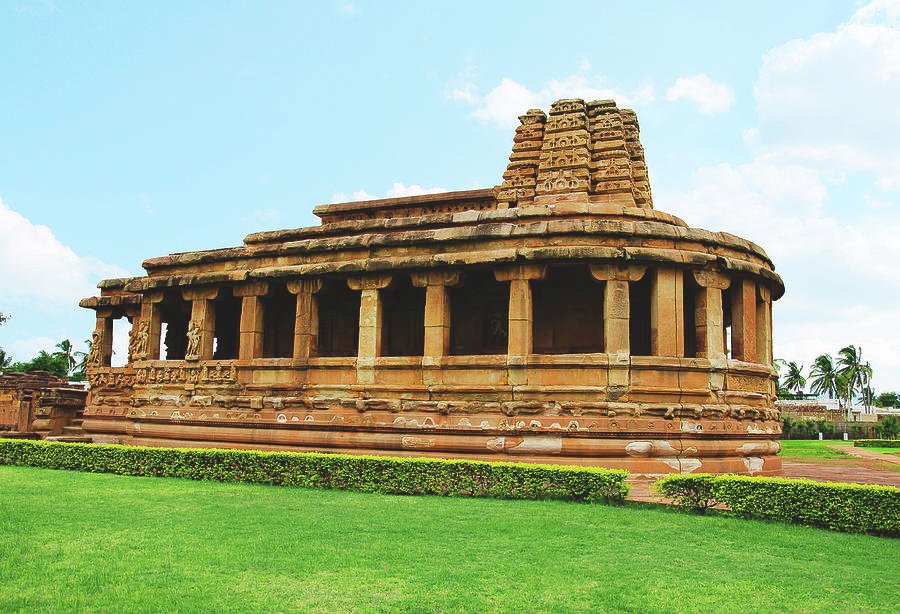

2. Ashtoor is an important centre of Indo-Saracenic monuments. Like the Egyptian pharaohs, the Bahamani kings were fond of building magnificent tombs to house themselves after death. Twelve imposing mausoleums are located at Ashtur east of Bidar. Of these, the tombs of Ahamad Shah and Alauddin Shah II stand out due to their grandeur.
Major tombs in Ashtoor
- Tomb of Ahmad Shah Al Wali Bahamani
- Tomb of Ahmad Shah’s Queen
- Tomb of Sultan Allauddin Shah II
- Tomb of Sultan Humayun
- Tomb of Malika-i-Jahan
- Chaukhandi of Hazrat Khalil Ullah
3. Badami occupies an important place in the heritage history of Karnataka. Badami is picturesquely nestled at the mouth of a ravine between two rocky hills. The exquisite sculptures and sandstone cliffs of Badami bring forth many a tale from the yesteryears. Four rock-cut caves adorned with ancient carved pillars and bracket figures cut out of red sandstone is just a flight of steps away.
The caves overlook the Agastya Theertha Lake, its banks dotted with a group of Bhutanatha Temples. Dedicated to Shiva’s form as the god of souls, spirits and ghosts, the Bhutanatha Temple dates back to the 7th century with the outer mantapa added in 11th century during the late Kalyani Chalukyan age. The caves are best seen at sunset when the evening sun captures the rust-red tint of the sandstone. A visit to Pattadakal is coupled with the visit to Badami and Aihole.
Cave 1: The first Badami cave temple is dedicated to Nataraja (Lord Shiva). Lifesize 18 handed Nataraja image striking 81 dance poses welcomes the visitors here.
Cave 2: This Badami cave temple is flanked by celestial guardians and dwarf statues. This cave shows several of Lord Vishnu’s avatars. Four ornate pillars with carvings of the mythical lion Yali support this temple
Cave 3: This is the finest as well as the largest of the group. It has giant-sized images of Lord Vishnu seated on a coiled serpent along with other images of the Vaishnava pantheon. As in other caves, every inch of the roof and pillars are carved.
Cave 4: This cave temple is dedicated to the Jainism. A small cave with images of Jain Tirthankaras, the sanctum holds a large sculpture of Lord Mahavira. This temple leads to the fort and the top of the hill.
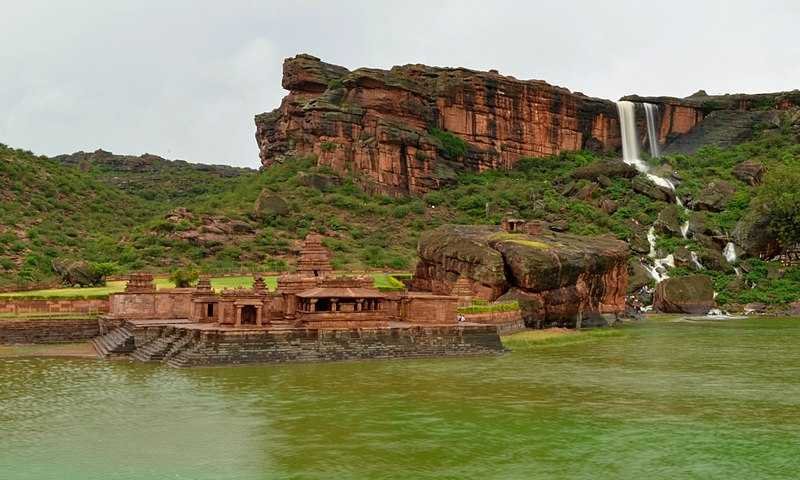
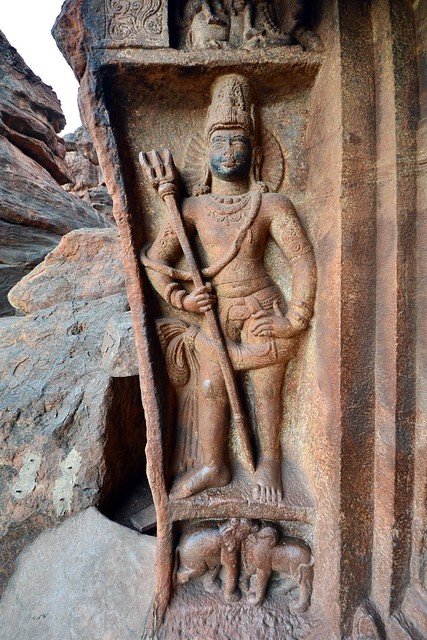
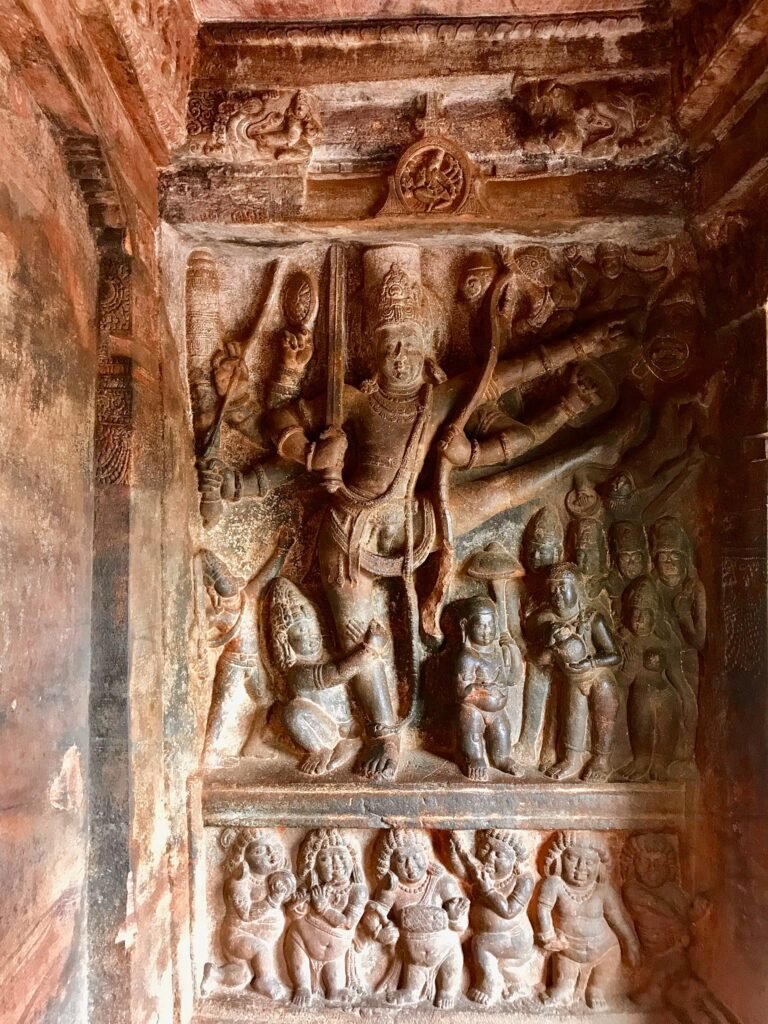

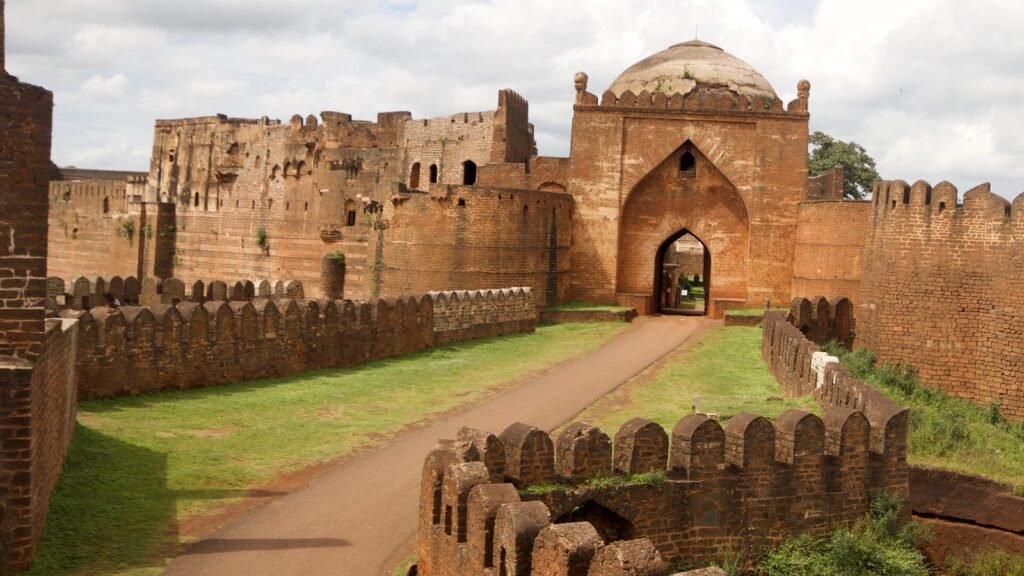

4. Bidar, Basavakalyan was once the capital of the Kalyana Chalukyas and the centre of a great social and religious upheaval in the 12th century. Basavakalyan in Bidar district is famed for its cultural heritage and is known as the Karmabhoomi of Basaveshwara, the revered 12th century religious reformer. During his time, it became a seat of learning, and an abode of spiritual wisdom. Basavakalyan is renowned for the saints who made the city their home: Basaveshwara, Allama Prabhu, Akka-Mahadevi, Channabasavanna and Siddarama. You can also see some monuments like the Chaluckyan Fort, few caves, and other places of historic and religious importance here.
Reasons to visit Basavakalyana
- Basavakalyana Fort: Situated in north of Basavakalyana town, the fort was built by the Chalukya rulers. Basavakalyana Fort has ancient gates, several small canons and a larger 694 cm canon named ‘Navgaz’. The fort also has a temple without any deity, believed to be of Goddess Lakshmi. Hindu and Jain icons can be seen on fort walls. Fort campus also houses a museum with many interesting antiquities on display.
- Basaveshwara Temple: A modern temple with special worship every Monday.
- Parusha Katte (Philiospher’s Stone): Believed to be the spot where Saint Basaveshwara used to sit, give aid to needy people and recite ‘Vachanas’ (poems with social messages) to his disciples. An earlier fort, now in ruins has been converted into a horticultural farm.
- Tripurantaka Lake: A lake 5 kms from Basavakalyana city, known for Shiva temple and multiple laterite caves (Akka Nagamma’s cave, Nuliya Chandrayya’s cave, Chennabasavanna cave, and Vijnaneshwara Cave).
- Anubhava Mantapa: A community venue built in the shape of a huge shivalinga, situated behind Rudramuni Cave. Anubhava Mantapa has a library, a museum and cottages for visitors.
5. Stone Chariot is an iconic monument located in front of Vijaya Vittala Temple in Hampi, central Karnataka. Hampi is a UNESCO World Heritage Site.
Stone Chariot is a shrine dedicated to Garuda, the official vehicle of Lord Vishnu. Stone Chariot in Hampi is one of the three most popular stone chariots in India. Other two are in Konark (Odisha) and Mahabalipuram (Tamil Nadu).
Design: Built in Dravidian style, chariot has carvings depicting mythical battle scenes. Standing on two giant wheels, two elephants are seen pulling the chariot. Stone Chariot is made of multiple smaller stones assembled to perfection. Stone Chariot was partially damaged by invading army towards the end of Vijayanagara Empire.
History: Stone Chariot was built in the 16th century by the orders of King Krishnadevaraya of Vijayanagara Empire. The emperor is said to have been impressed by the Sun temple of Konark during the war with Kalinga and wanted to recreate a similar one in Hampi.
Recently released INR 50 currency notes of India have stone chariot images.
Timing: Vijaya Vittala Temple complex is open between 8.30 AM and 5 PM on all days.
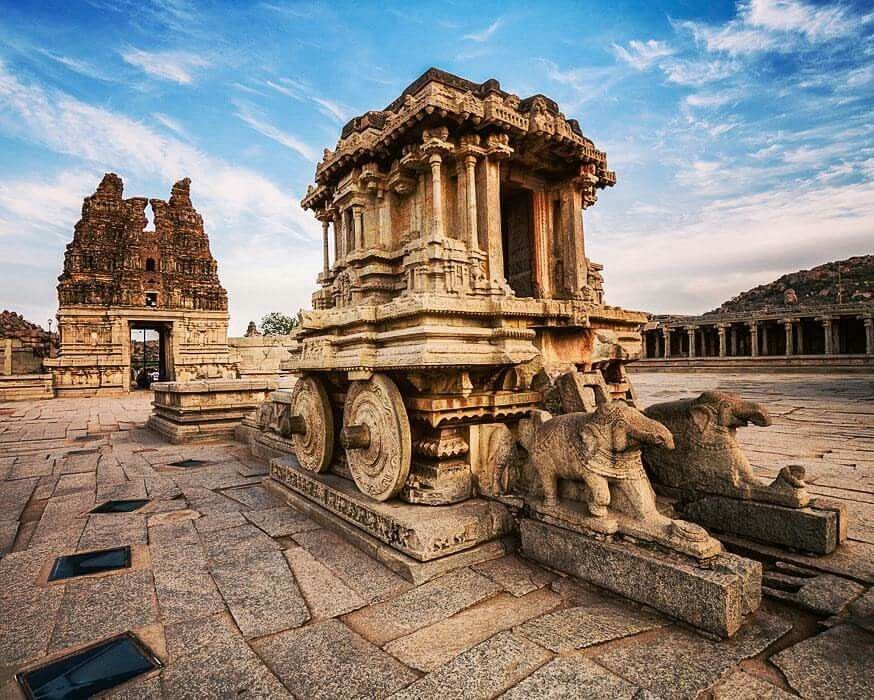

6. Kalyana Chalukya Temple: On the banks of a tank in Jalasangvi, a Kalyana Chalukya temple with Eshwara as main deity is in ruins. Kalyana Chalukya Temple of Jalasąngvi was built during King Vikramaditya the sixth, a prominent Chalukya Emperor. Outer walls of Kalyana Chalukya Temple in Jalasąngvi features beautiful sculptures, including several representations of ‘shilabalikes’ (carvings of female dancers) in various dancing postures, complete with ornaments. Sculpture of a lady depicted as inscribing a Sanskrit epigraph in Kannada characters describing Emperor Vikramadiya. Sculptures of Jalasângvi are believed to have inspired sculptures at Beluru and Halebeedu temples.
7. Hoysaleshwara Temple
The Hoysaleswara Temple poised on a star-shaped base on the lawn is an architectural marvel. This twin-shrined temple is perhaps the largest Shiva temple built by the Hoysalas. Its base consists of 8 rows of friezes carved with elephants, lions, horses and floral scrolls. Its walls are adorned with intricately carved Hindu deities, sages, stylised animals, birds and friezes depicting the life of Hoysala kings. Imagery from epics like the Ramayana, Mahabharatha and Bhagavad Gita adorn the outer walls with highly ornate temple doorways. It is believed that no other temple in the country captures the Indian epics as elegantly as Hoysaleswara Temple. The Nandimantapa is positioned right in front of the temple wherein there is a huge Nandi richly decorated with stone ornaments. Behind this is a shrine dedicated to Surya with a 2 m tall image. There are exquisite carvings in the interiors of the temple as well. The most striking item is the highly polished lathe-turned pillars.
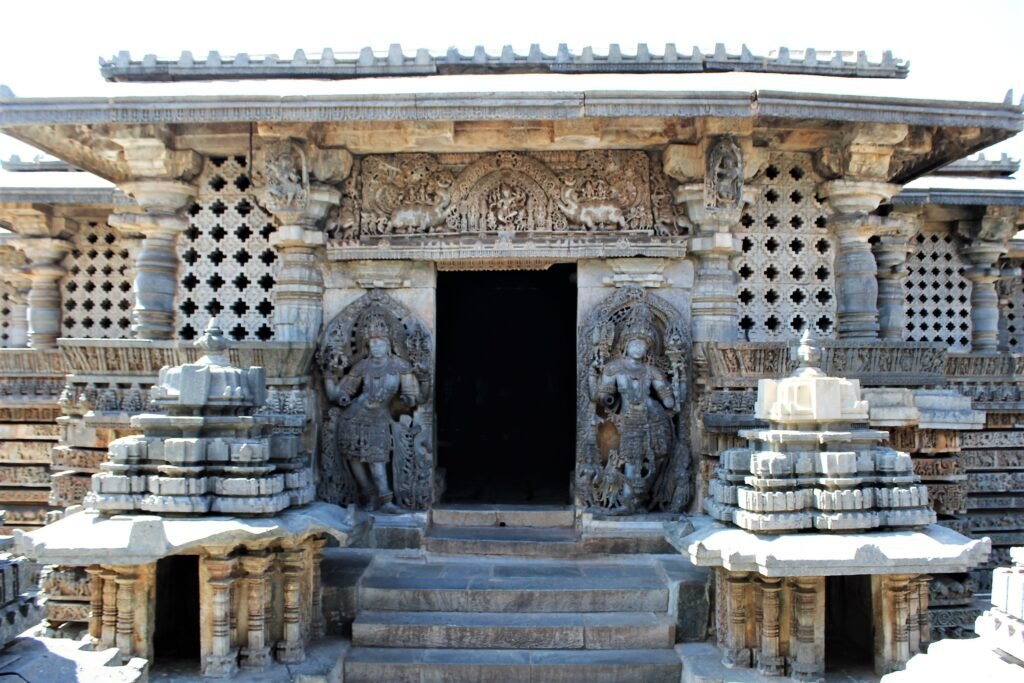

8. Chandravalli is situated immediately to the west of the fortified hill of Chitradurga. The archaeological discoveries made in the site, which take us to the Satavahana period and further back reveal settlements that are around 3000 years old. Lead coins belonging to the Satavahanas, Roman silver coins and ornaments of gold, silver and copper were discovered here. The hills around here are sprinkled with prehistoric caves and temples.
Highlights of Chandravalli:
- Ankli Matha Caves: Believed to have human dwelling in the past
- Ancient coins: Roman, Chinese and Shatavahana era coins were found in Chandravalli
- Ruins of dams: Breached ruins of three to four dams are found in Chandravalli, suggesting that region had lots of rainfall and the past rulers made an attempt to store those water by building dams and support agriculture. Some dams were built as early as fourth century AD by Kadamba ruler Mayura Sharma.
- Bhairaveshvara Temple
- Paradeshappa Caves: Seven caves formed centuries ago, inside the hill
- Large Boulders: Basavanagondi, Neralagondi, Baralagondi and Hulegondi
- Tiger Engraved rock: A low rocky hill in the centre of Chandravalli valley with a large boulder featuring a 13 ft long tiger engraved in it, with peculiarly bent legs, prominent whiskers and body with a chequered pattern.
The climate of Karnataka is subtropical, with winter (January and February), summer (March through May), southwest monsoon (June through September), and post-monsoon (October through December) seasons.
There are four different seasons in Karnataka: The monsoon season that occurs from June to September, the retreating monsoon season in October and November, winter from December to January, and summer from March to May.
Karnataka is India’s fourth most popular tourist destination. It has a variety of attractions, including:
Heritage destinations: Karnataka has many ancient temples, including the Belur and Halebidu temples. The Vijayanagara Empire’s ghost town of Hampi is also a UNESCO World Heritage Site.
Wildlife and national parks: Karnataka is known for its wildlife and national parks.
Hill stations: Karnataka has many magical hill stations.
Waterfalls: Karnataka has many spectacular waterfalls.
Beaches: Karnataka has a 320 km coastline with unspoiled beaches.
Pilgrimage centers: Karnataka has many pilgrimage centers.
Food: Karnataka has a variety of local cuisine.
Culture: Karnataka has a rich culture and history.

BANDHIPUR
The reserve in Bandipur stretches across the adjoining states of Tamil Nadu and Kerala, in places called Mudumalai and Wayanad respectively. Together, they form the biggest protected forest reserve in Southern India. It is also part of the protected Nilgiri Biosphere Reserve, where the world famous Silent Valley is located. Located on the banks of the Kabini River, the Bandipur forest area is also home to many wild animals like the panther, bison, many species of deer, wild elephants, wild boar, jackal, etc. The Bandipur Forest Reserve area is one of the better-known tiger reserves in India, boasting of a tiger population of nearly 70. It lies just 80 km from Mysore and about 220 km from Bangalore, and you can drive down from either of the cities.

BANGALORE
Bangalore is the capital city of the southern Indian state of Karnataka. It is the seventh largest city in India. It is also known as the Garden City because of its many beautiful gardens and parks. The nandi hills in Bangalore is not to be missed by the pious. Though the origin of Bangalore is ancient, the present-day city was founded in the 16th century and has since continued to be an important administrative center. Because of the high concentration of IT industry, it also called the Silicon Valley of India.

COORG
Coorg known as scotland of India Located amidst imposing mountains in Karnataka with a perpetually misty landscape, Coorg is a popular coffee producing hill station. It is popular for its beautiful green hills and the streams cutting right through them. It also stands as a popular destination because of its culture and people. The Kodavas, a local clan specializing in martial arts, are especially notable for their keen hospitality. Coorg, officially known as Kodagu, is the most affluent hill station in Karnataka. It is well known for its breathtakingly exotic scenery and lush greenery. Forest covered hills, spice and coffee plantations only add to the landscape. Madikeri is the region’s centre point with all transportation for getting around starting from here. On a visit to Coorg, cover the beautiful towns like Virajpet, Kushalnagar, Gonikoppal, Pollibetta, and Somwarpet.
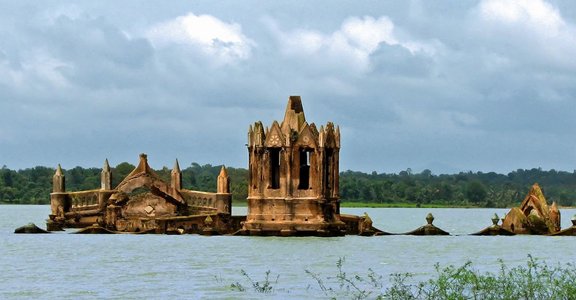
HASSAN
Hassan, located in Karnataka, has a special place in history. It was the command centre of the Hoysala Empire, one of the most successful dynasties of South India. The district was named after the presiding goddess of the region called ‘Haasanamba’. Having been the focus of many empires over the centuries, there are many places nearby Hassan that is worth visiting if you are interested in exploring the architectural heritage of Karnataka.
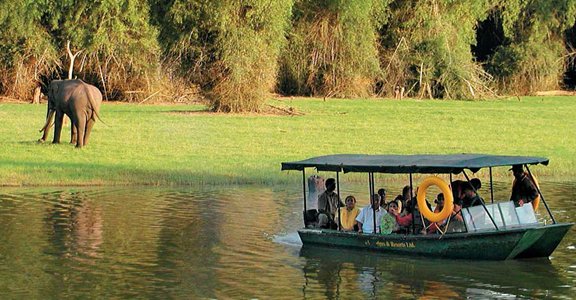
KABINI
Countless wildlife attractions, dense woods, picturesque lake and divine green landscapes – welcome to Kabini, a paradise for all the wildlife lovers, located 80 km from Mysore and 205 km from Bangalore. Once the private hunting lodge of the Maharaja of Mysore, today Kabini is one of the best wildlife sanctuaries in Karnataka.
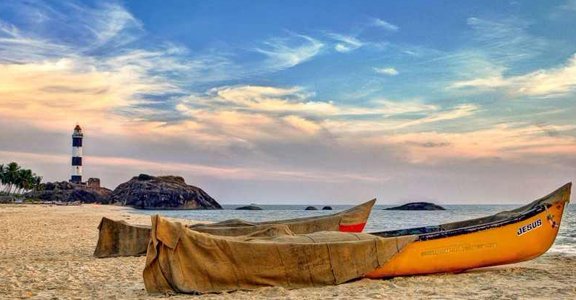
MANGALORE
Mangalore’s natural beauty gives it an edge that is hard to beat. The 132.45 sq km city is spread out over the backwaters of the two rivers, Netravati and Gurpura. The Arabian Sea coast is lined by golden beaches dotted with swaying palms. This stunning visage is topped by the green hills and the traditional houses with the red-tiled roofs which house the city’s 6 lakh inhabitants.
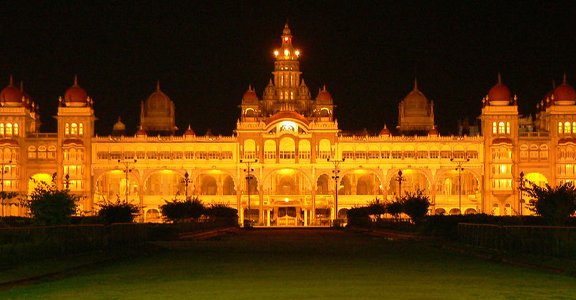
MYSORE
Mysore Tourist Places offers a variety of attractions. Over the years Mysore city has attracted tourists from all over the world, to see the splendor of the city of Mysore. Tourist attractions include prehistoric sites, monuments, museums, forts, temples, mosques, churches and zoo. The historic city of Mysore is famed for its magnificent palaces and majestic buildings, sprawling gardens and tree-lined boulevards, simmering Silks and Sandalwood

KUNDREMUKH
The second highest peak of Karnataka, Kudremukh literally means ‘horse-face’, named after the picturesque view of the side of the magnificent mountain that looks like the face of a horse. The mountainous paths decked with vast grasslands and dense forests make this serene hill station very popular amongst the inhabitants of Bangalore and Mangalore for a nature retreat, away from the din of the city.
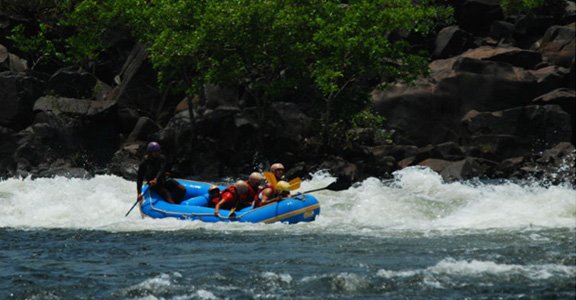
DANDELI
Dandeli wildlife sanctuary is a great tourist place in South India for you wild, dirt-loving travelers. It is blessed with dense deciduous forests, a wide variety of wild animals and the Dandeli river to boot. A popular weekend holiday destination in Karnataka, this places is a preferred destination for coracle boating, trekking, and rafting. The scenic beauty of the place coupled with the adventure sports activities makes it an ideal holiday spot. Go white water river rafting with friends, and relax in the lush rain-forest to make your trip to south India memorable.
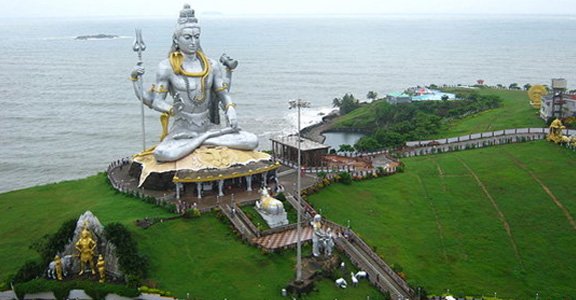
GOKARNA
Gokarna is a small temple town on the western coast of India in the Kumta taluk of Uttara Kannada district of the state of Karnataka. Gokarna is known as one of the seven important Hindu pilgrimage centers. It is on what was once an unspoiled beach near the estuary of the river Aghanashini. Recently, due to the influx of tourists, the character of the town has changed; it is no longer just a center of pilgrimage, though large numbers of devotees visit to offer prayers and worship to Lord Shiva. Due to its laid-back, unspoiled and rustic nature many younger western tourists started visiting Gokarna about a decade ago. The beaches around Gokarna were hardly used by the locals until these mainly western tourists started coming.

BADAMI
Located in the Bagalkot district of North Karnataka in India, Badami was formerly called Vatapi. This place is quite popular for its cave temples that are cut out of sandstone rocks which surrounds the Agastya Lake. Three among the four cave temples are dedicated to deities of Hinduism and one temple is dedicated to Jainism. A flight of stairs within connects these cave temples to each other. The first temple is dedicated to Nataraja, the second and third cave temples to Lord Vishnu and the fourth temple to Lord Mahavira the founder of Jainism. The Government of India has declared Badami as one of the heritage cities in India.
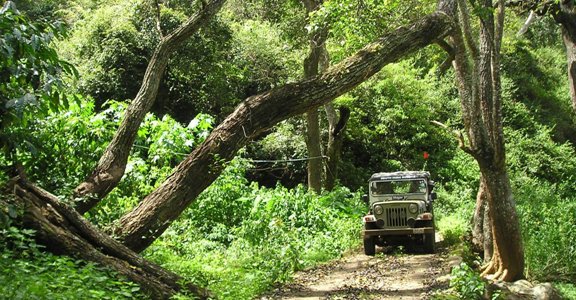
CHIKMANGALUR
Chikmagalur is a hill station in Karnataka, a state in southwest India. To the north is Baba Budangiri, a mountain range in the Western Ghats, with 3 large caves said to be holy. Trails through forests and grasslands lead up to Mullayanagiri Peak. The cascading Hebbe Falls lies in an area of coffee plantations. The forested Bhadra Wildlife Sanctuary, northwest of Chikmagalur, is home to elephants, tigers, and leopards.

UDUPI
Udupi is one of the top tourist attractions in Karnataka. It is notable for the Krishna Temple. It lends its name to the popular Udupi cuisine. It is also known as Lord Parashurama Kshetra and is famous for Kanakana Kindi. is a city in the southwest Indian state of Karnataka.Due to its laid-back, unspoiled and rustic nature many younger western tourists started visiting Gokarna about a decade ago. The beaches around Gokarna were hardly used by the locals until these mainly western tourists started coming.

BELGAUM
Belgaum (or Belagavi) is a city in the southwest Indian state of Karnataka. Circled by a moat, the large Belgaum Fort contains centuries-old mosques and the Kamal Basti, a Jain temple. In the city center, the domed, 1950s Mahadev Temple sits in a park. The ancient Kapileshwara Temple is dedicated to Lord Shiva. Northwest is the pink-stone St. Mary’s Church, with carved Gothic arches and a teak-and-marble altar. It is known for its pleasant year-round climate. Belgaum is at its coldest in winter and it experiences almost continuous monsoon rains from June through September.

BIJAPUR
Bijapur, officially known as Vijayapura, is the district headquarters of Bijapur District of Karnataka state of India. Bijapur city is well known for its historical monuments of architectural importance built during the rule of the Adil Shahi dynasty. And it also well known for the sports by the popular Karnataka premier league team as Bijapur Bulls. Bijapur is located 530 km northwest of the State Capital Bangalore and about 550 km from Mumbai, and 384 km west of the city of Hyderabad.

HAMPI
Hampi, also referred to as the Group of Monuments at Hampi, is a UNESCO World Heritage Site located in east-central Karnataka, India.. It is famous for its ruins belonging to the erstwhile medieval Hindu kingdom of Vijaynagar and it is declared a World Heritage site. The temples ofHampi, its monolithic sculptures and monuments, attract the traveler because of their excellent workmanship. Best time to visit Hampi is from October to February as the temperature is pleasant throughout the day. You can also visit during the monsoon season, but you have to be careful while walking on the boulders as they become quite slippery. Avoid visiting Hampi in summers, as it is scorching and dry.

GULBARGA
Gulbarga, also known as Kalaburagi, is a city in the Indian state of Karnataka, India. … It is called one of the Sufi cities having famous religious places, like Khwaja Banda Nawaz Dargah, Sharana Basaveshwara Temple, Ladle Mashak, and Buddha Vihar. It also has a fort built during Bahmani rule. The nearest airport to Gulbarga is located in Sholapur, at a distance of nearly 81 km from Gulbarga. The city is well connected with all major cities of India like Bangalore, Hyderabad, and Chennai through a number of regular trains. Buses also operate regularly between Gulbarga and cities like Bangalore and Mysore.
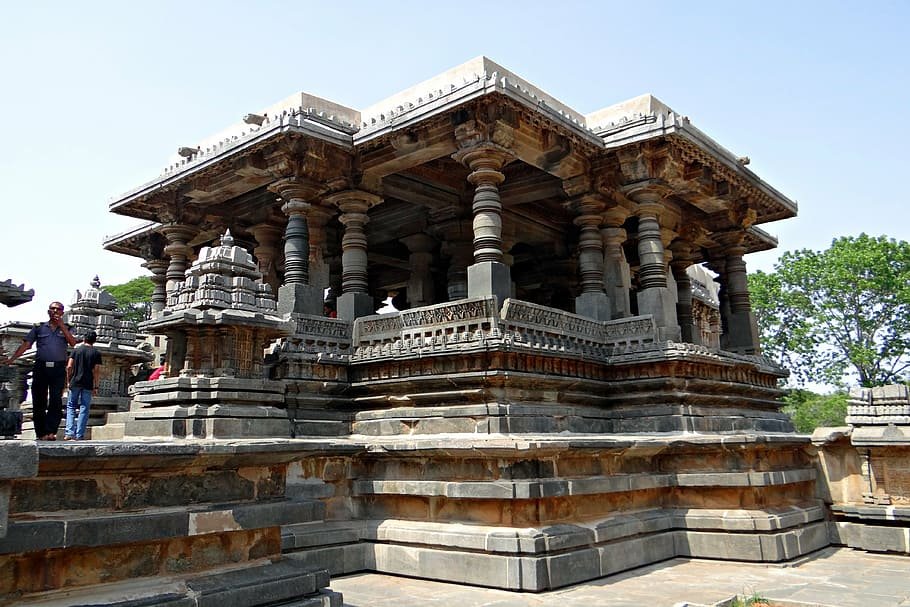
HALEBID
Halebid (or Halebidu) is a city located in the Hassan district of Karnataka state. Formerly known as Dwarasamudra, Halebid is a city with adorned with a beautiful collection of temples, shrines and sculptures. It is also known as the Gem of Indian architecture owing to its sterling Hoysala architecture, its magnificent temple complexes and some stunning Jain sites.Frozen in time, Halebid can be a great showcase of culture, architecture and imprints of certain significant events of the past. Halebid was the imperial capital of the great Hoysala Empire during the 12th and 13th century and is now home to the distinguished Hoyaleswara and Kedareshwara temples. It is also famous for its sculptures and panels designed in the prominent Hoysala style. During the 14th century, it was looted and plundered by Malik Kafur of the Delhi Sultanate twice. Hence it got its name ‘Halebid’ which translates to the ‘old city’.
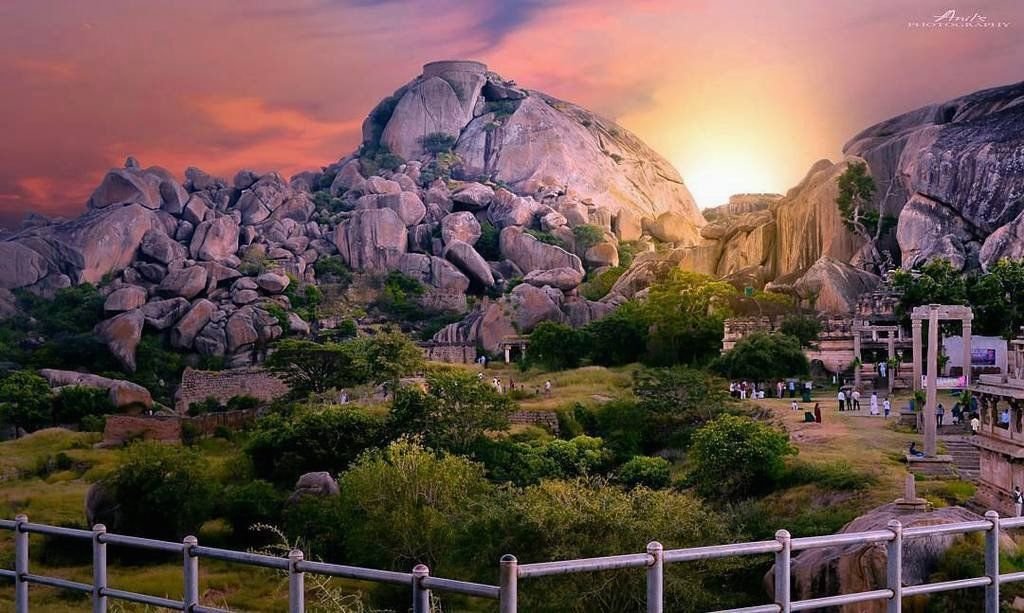
CHITRADURGA
Chitradurga is a city in Karnataka, India known for its monuments, history, and landscape. This place has experienced the life of man from the earliest historic times resulting in the spread of antiquities and monuments throughout the district. These not only reflect the cultural fervour of this region but have become popular tourist spots. Chitradurga, centrally located in the state and of Karnataka, has been ruled by all the important royal dynasties of this state. The influence of the rule of Asoka, the Mauryan emperors, as early as III century B.C.E is discernible in the northern part of district. Consequently this region was under the political sway of the Shathavahanas, the Kadambas, the Chalukyas of Bhadami, the Rashrakutas, the Later Chalukyas of Kalyana, the Hoysalas, the Vijayanagara rulers, the palegars of Chitradurga and the Wodeyars of Mysore. Thus this district has an history spanning from the earliest known Empires till the British Rule.
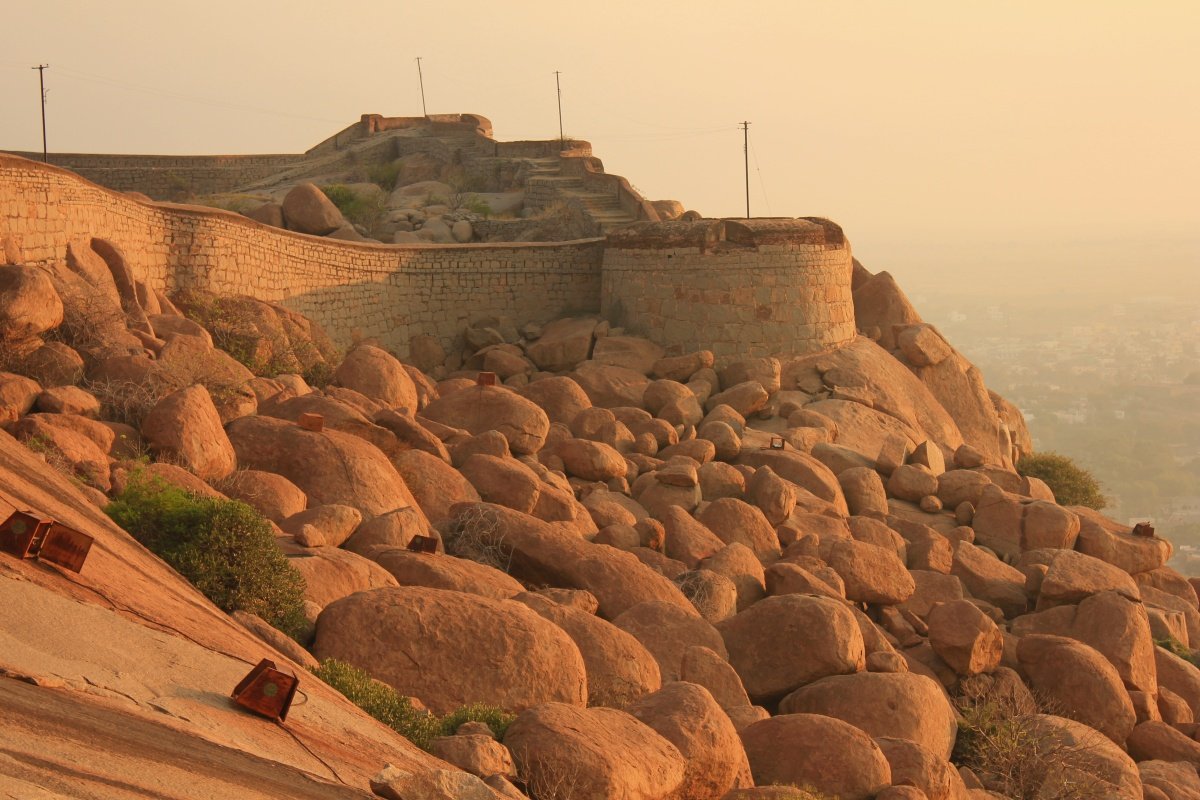
BELLARY
Bellary is popular destination for tourist. It’s known for its historical and natural attractions. urprises travelers with the many charms that it hides behind its calm façade. As you move around the city, taking in the splendor of the magnificent monuments that flank the landscape, you can witness the rich cultural heritage that embellishes the city. Adding a modern tinge to this blend is Bellary’s growing reputation as a prominent industrial hub. Deriving its name from an incarnation of Goddess Durgamma, Balari, the city guards an age-old religious tradition. Located in the eastern part of the state of Karnataka, Bellary delights you with the simplicity and beauty etched in every aspect.
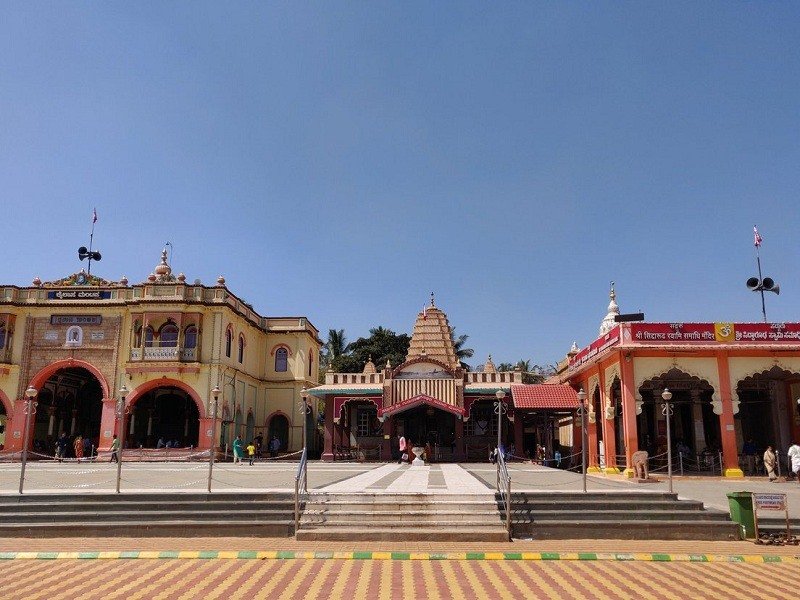
HUBLI
Hubli is a culturally rich town, which offer tourists a plethora of reasons to visit it and makes it one of the most preferred destinations in Karnataka. Hubli is a commercial hub and forms an important centre of trade activities, and therefore, it is often referred as “Chota Bombay.” Right from beautiful forested hills to world heritage sites to beaches to temples, Hubli-Dharwad has everything that an ideal holiday destination should have for its tourists. Blessed with so many picturesque sites and monuments, the city never disappoints. Tourism in Hubli-Dharwad is at its peak as a lot of tourists are visiting this amazing destination frequently to enjoy their sojourn in the best possible way

BIDAR
Bidar is the Medieval Legacy of South India Bearing the glorious marks of its momentous past, in the form of marvelous fortresses and magnificent palaces, a queer nostalgic charm engulfs Bidar. Surrounded by picturesque views of the surrounding forests, with the Godavari and Krishna rivers perennially flowing by its side, Bidar seems all the more captivating. The ancient seat of the Bahamani dynasty, Bidar also boasts of a devout religious tradition. Located in the north-eastern part of the state of Karnataka, this legendary city is enriched with a vast cultural heritage. Unmatched in its touristic diversity, Bidar is every traveler’s delight.There are a number of experiences to be explored in Bidar. Known for its historical sites, Bidar houses some of the most exquisite monuments in India. The majestic Bidar fort stands tall as the most alluring of these. The enormous fortress houses the royal palace Rangin Mahal, the Takhat Mahal, the Diwan-e-Aam, and the Gagan Mahal. One of the most prominent landmarks and tourist attractions of the city is the ancient clock tower, Chaubara.
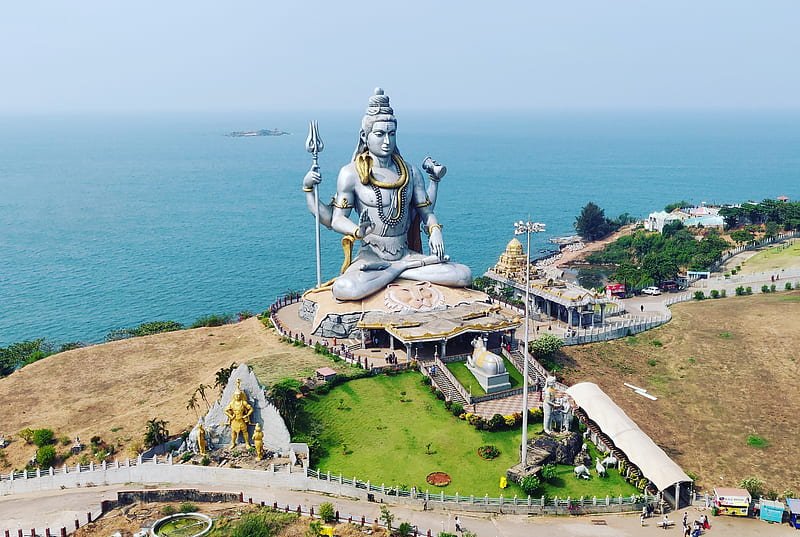
MURDHESHWAR
Murdheshwar he exotic beach destination in the South Indian state Karnataka attracts tourists round the year with its wonderful sea shore and the magnificent Murudeshwara temple. The small town is known for the temples and the huge statue of Lord Shiva. The city is witnessing both tourists and devotees from all corners of the state and the country round the year. Strolling through the sandy sea shore, enjoying the sea breeze embracing and relaxing your nerves, beholding the beauty of the tallest gateway tower of the temple and the Shiva statue positioned to face the temple are the highlights of Murudeshwar. It is situated between Bhatkal and Honnavar, the beach is one of the prominent attractions of Karnataka. The beach is surrounded by Arabian Sea and the hills.

BANDIPUR
Bandipur National Park was once the hunting grounds of the Maharaja of Mysore. It was later established as a reserve in 1974 under Project Tiger and these deciduous forests rich in wildlife have become a popular tourist attraction since then. It is 80 km from Mysore enroute Ooty in Tamil Nadu. Due to a lot of wildlife casualties because of speeding vehicles that go through the park, a ban on traffic between 9 PM to 6 AM has been established to ensure the safety of the animals of the park.It is located in the Nilgiris and is the first Biosphere Reserve in India. Spread over 874 sq km, the park is replete with a wide range of endangered wildlife like elephants, hornbills, deers, pythons, sloth bears, pythons, panthers etc. and multitudes of teak and sandalwood trees. Bandipur National Park is neighbours with the Nagarhole and the Wayanad Wildlife sanctuaries and is a few minutes from the Mudumalai National Park.
Plan Your next trip
Recommended Tour Options For Karnataka

Blissful Karnataka

Enigmatic Karnataka

Wonderland of Karnataka
Karnataka Dance Forms
1. Dollu Kunitha is a traditional dance form in Karnataka. Dollu Kunithâ is high on energy and performed all over the state during major festivals and celebrations. It is a popular folk dance associated with the worship of Sree Beeralingeshwara who is considered as a form of Lord Shiva, originated in the rituals of the Kuruba Gowda community of North Karnataka.
It is performed in a group of 10-12 drummers. Both men and women can be part of the Dollu Kunithâ team.
The performance never goes unnoticed, due to high decibel, high energy performance put forward by the troupe. Drum dance is usually performed in a circular or semi-circular fashion with drum holders beating their drums in rhythm, along with singing and accompanying music.
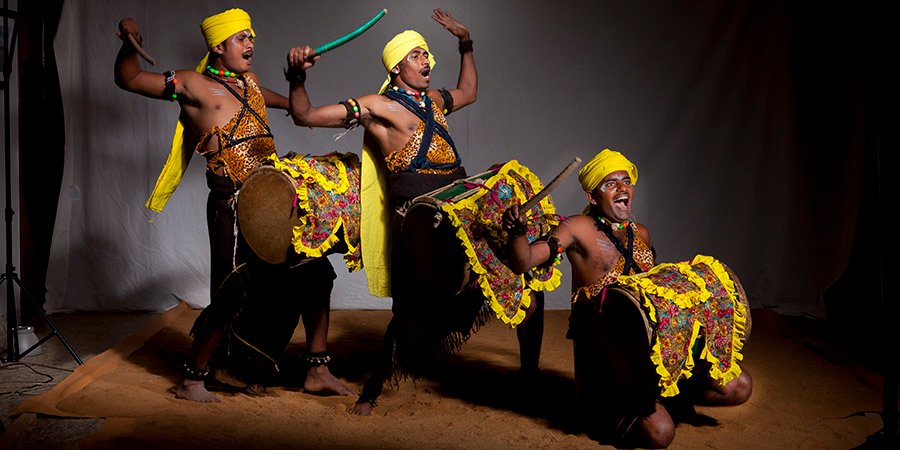
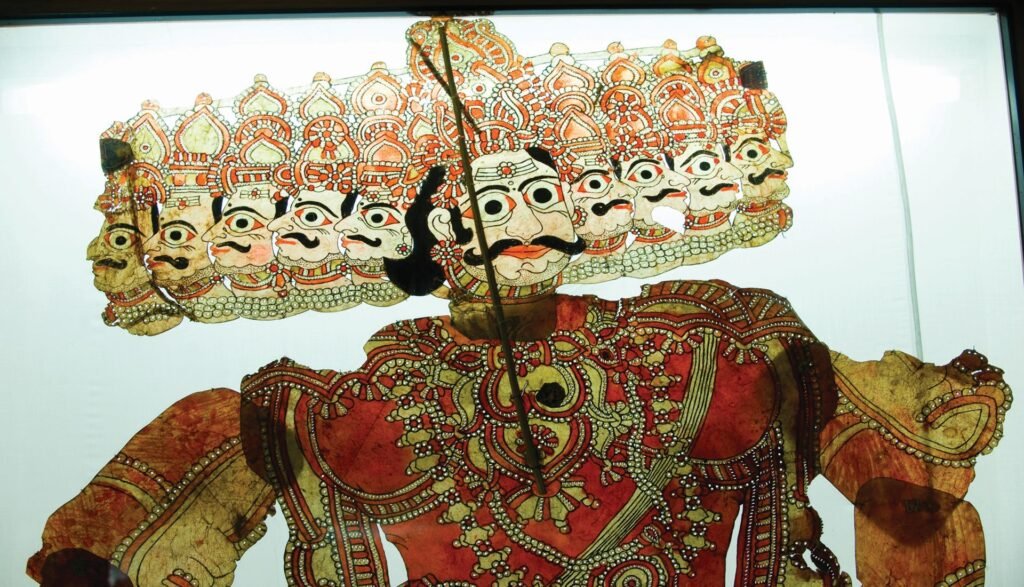
2. Gombe Aata (play of dolls or Puppet show) is a unique form of art found in Karnataka. Gombe Aata involves story telling using characters made from dolls, whose performance is controlled by humans in the background using invisible threads.
Puppets represent humans in miniature form and are crafted as per needs of a character. Made of wood and dressed with silk cloths, puppets are core components of Gombe Aata. Puppets will have multiple transparent strings attached to key body parts. These strings are invisible from a distance and help the handlers control puppet movements during a show.
The show usually enacts a mini plot from epics like Ramayana, Mahabharata or other puranas/ancient stories.
3. Huli Vesha or Tiger faced dance is a dance form unique to coastal Karnataka. Huli Vesha is performed by local youth during the Navratri Festival (the 9 nights long festival which often falls in the month of October).
It is performed to pay tribute to Goddess Durga, whose official animal is tiger. Goddess Durga is often known for her aggressive stance, capable of keeping evil forces away from her devotees.
The performance often involves a group of people dressing up in tiger costume- tiger face masks or paintings, tiger stripes on the body, accompanied by yellow or orange coloured shorts. The group moves on the main streets of the town, dancing, accompanied by drums and music, entertaining the public on the way, at times collecting donations from whoever offers the same. During the dance, they make stops and perform some stunts and formations to keep the crowd more entertained.
Traditional dancers dressed in local costume dance with Kamsale in their hands. While singing bhajans/devotional songs they dance rhythmically and tap the Kamsales to each other at regular intervals to produce melodic sound that complements the music and dance.
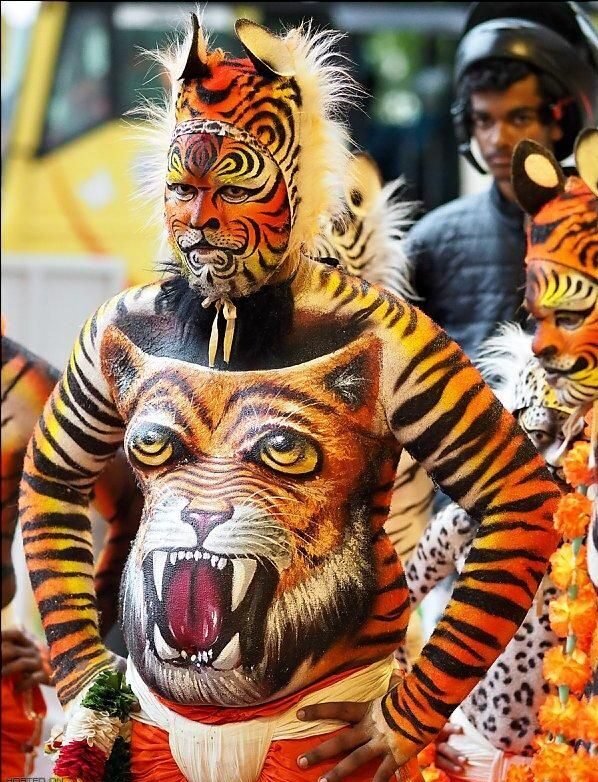
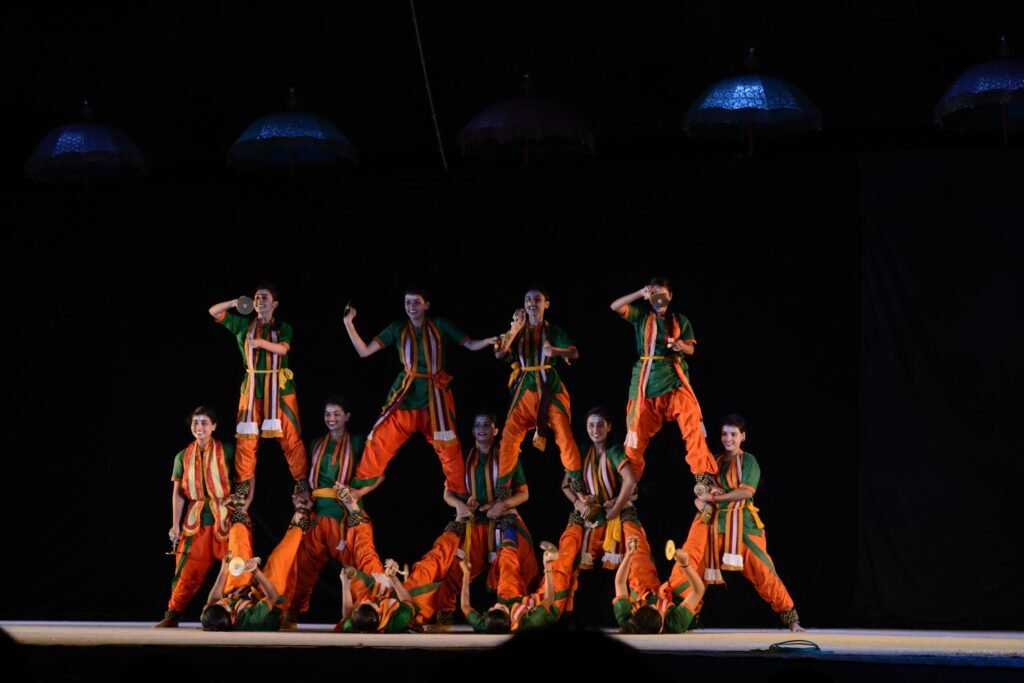
4. Kamsale dance is usually done in large groups of 10-12 dancers and is often performed near temples as a part of prayer to the lord. Songs and dance used in Kamsale dance usually praises the lord, communicates troubles faced by common people and seeks divine blessings.
Men from Halu Kuruba tribe in Chamarajanagara district are well known for Kamsale dance. The tribe is known to worship Lord Shiva. Kamsale dance is commonly performed in Male Mahadeshwara Hill temple and is said to be in practice since centuries.
This is an integral part of 3 day annual car festival at Male Mahadeshwara Hill temple on the outskirts of Mysuru. This celebration falls during Deepavali festival. Besides this, Kamsale Dance could be part of various cultural programs in South Karnataka. (Cultural performances during Mysuru Dasara, Bengaluru Habba and other events may have Kamsale Dance show- schedule varies every year). Many Kannada films feature Kamsale Nrutya (Example: Jogi featuring Shivaraj Kumar)
5. Yakshagana is a traditional folk dance form popular in Coastal Karnataka districts.
A trip to the coastal belt would be incomplete without watching the Yakshagana – an elaborate dance-drama performance unique to Karnataka. It is a rare combination of dance, music, song, scholarly dialogues and colourful costumes. A celestial world unfolds before the audience, as loud singing and drumming form a backdrop to dancers clad in striking costumes. Hence the name Yaksha (celestial) Gana (music).
This is a night-long event, with elaborately adorned performers dancing to the beat of drums in open-air theatres – usually in the village paddy fields after the winter crop has been harvested. Traditionally, men portray all roles, including the female ones, though women are now part of Yakshagana troupes. A typical troupe consists of 15 to 20 actors and a Bhagavatha, who is the master of ceremonies and the main storyteller. The performances draw crowds from far and wide, with a fair-ground atmosphere pervading the venue till dawn.

Top Foods to try in Karnataka :
1. Mangaluru Banana Bun is a sweetish quick bite snacks popular in coastal Karnataka. Banana bun is made from mashed ripe bananas, flour and sugar. Banana bun is a must try delicacy while visiting coastal Karnataka. Banana bun may also be referred to as Banana Poori.
Where to get Banana Bun:
Banana Bun is readily available in most restaurants and bakeries in coastal Karnataka cities such as Mangaluru, Udupi, Kundapura, Karkala etc. In other cities, one may use food delivery apps to locate a nearby restaurant that may be serving Mangaluru Banana Bun.
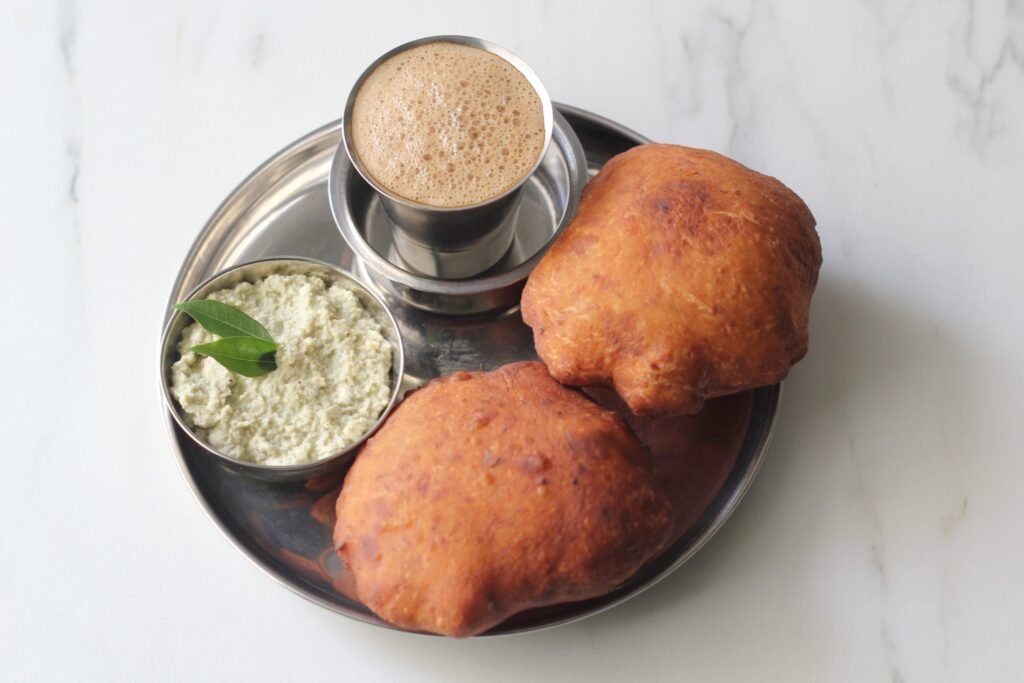

2. Goli Baje is a popular Coastal Karnataka snack item. Goli Baje is also referred to as Mangaluru Bonda as it is believed to have originated in the coastal city of Mangaluru. It is crispy outside and soft inside. Goli Baje is made out of maida flour, with added ingredients such as curd, coconut gratings, coriander, ginger and curry leaves. Flour mix is allowed to ferment to get a tangy flavor. Baking soda/sour curd might be used as an alternate for quicker preparation. Small balls made of this flour mix are fried in a pan till the outer layer turns brown.
Where to get Goli Baje: Most restaurants and eateries in Coastal Karnataka serve Goli Baje during evening hours. Goli Baje is also likely to be available at various Udupi restaurants across the state.
3. Mangaluru Fish Curry is a popular non vegetarian dish in Coastal Karnataka. Made with locally sourced fish and spicy masalas, Mangaluru Fish Curry is a must try cuisine for anyone who loves fish.
Dosa is a popular breakfast dish in South India made from fermented rice+urad dal (black gram) batter baked thin on a hot

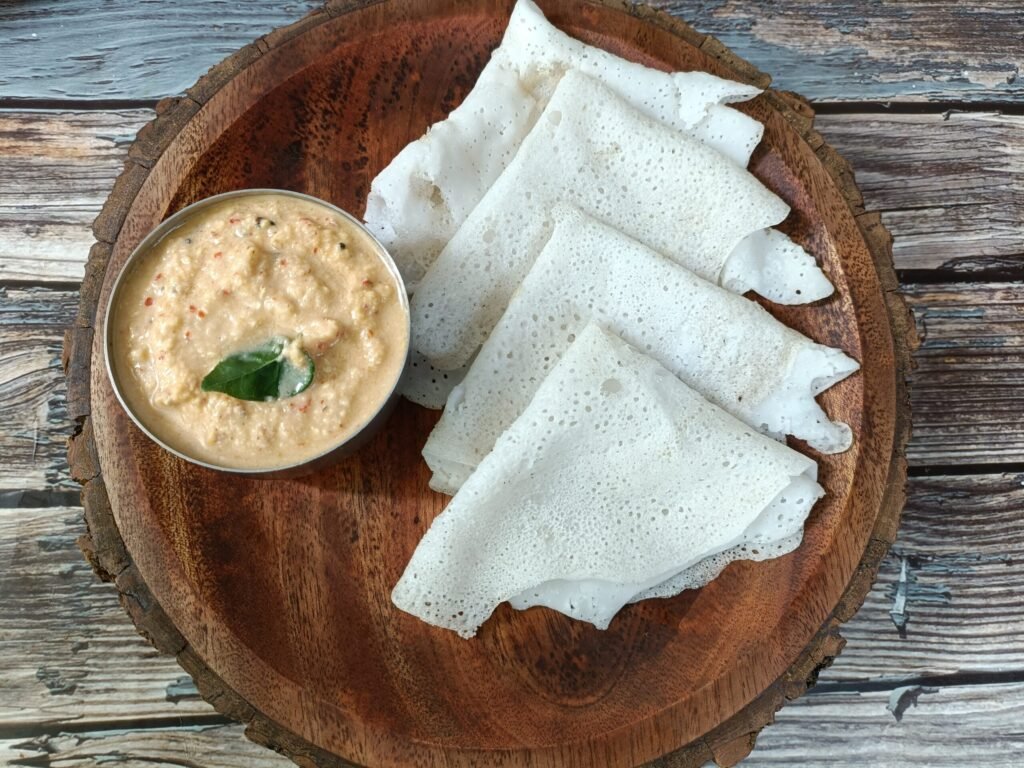
4. Dosa is a popular breakfast dish in South India made from fermented rice+urad dal (black gram) batter baked thin on a hot pan.
Neer Dose literally translates to ‘Water Dosa’. Neer Dose is a dosa variant made out of batter made from soaked rice (no fermentation unlike regular Dosa or Idli). After a few hours of soaking, rice is grounded to make Neer Dose batter. A bit of salt is added for taste.
Where to find Neer Dose:
Neer Dose is readily served in most restaurants of Coastal Karnataka districts- Udupi, Dakshina Kannada and Uttara Kannada (South & North Canara) and in some Malenadu districts such as Shivamogga and Hassan. Neer Dose is priced very affordably and helps quench hunger pangs as well as taste buds. It is also available in select restaurants of Bengaluru specializing in coastal Karnataka food.
5. Patrode is a unique coastal Karnataka dish made from colocasia leaves. (Kesuvina ele in Kannada)
Preparation: Colocasia leaves grow generously adjacent to water streams in Coastal Karnataka. Colocasia leaves are carefully selected for use in Patrode. Only trained eyes can locate the right kind of leaves to be plucked- not too young, not too ripe.
Once selected colocasia leaves are cleaned, a layer of rice flour, urad dal pre-mixed with spices, tamarind and jaggery is applied on top of the leaves. Multiple layers of leaves and rice flour mix are stacked one above another. Then the leaves are rolled and steam cooked in large vessels.
Where to get Patrode: Patrode is served in several restaurants in Coastal Karnataka cities such as Mangaluru, Udupi, Kundapura.
In Bengaluru several eateries specializing Coastal Karnataka cuisines – such as Woody’s in Commercial Street, Mangalore pearl in Halasuru, Karavali restaurant in Residency Road, Namma Kudla in Malleshwaram are the popular outlets.


